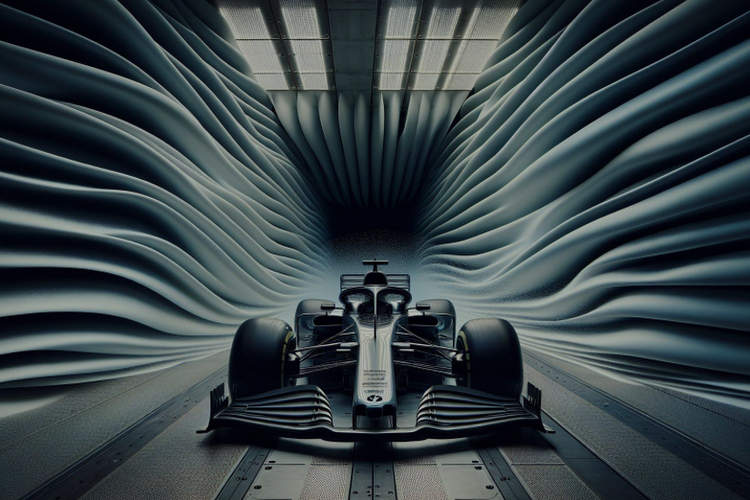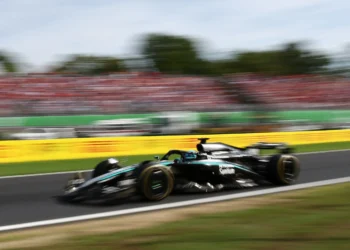Both industries rely heavily on data, analysis, and continuous improvement to maintain a competitive edge. This article explores the evolution of Formula 1 car aerodynamics, highlighting how this aspect of engineering has revolutionized the sport over the years.
Formula 1 and the betting sector share significant elements of risk management. In Formula 1, teams consistently analyze data and make strategic decisions to mitigate risks on the track, ranging from weather conditions to tire selections and fuel management. Similarly, bettors assess odds, manage their finances, and make calculated bets to optimize their chances of winning, minimizing potential losses. In both domains, the ability to make informed decisions based on available data can determine success or failure, emphasizing the crucial role of strategy and analysis in high-risk environments.
The 1950s marked the beginning of Formula 1 racing, a period characterized by relatively simple car designs. These early vehicles had a low power-to-weight ratio and basic aerodynamic features. The focus was primarily on mechanical reliability and the driver’s expertise, rather than aerodynamic efficiency. Lap speeds averaged around 70 mph, a significant difference compared to the impressive speeds seen in contemporary races.
As the sport advanced, so did the understanding of aerodynamics. Engineers began experimenting with various shapes and configurations to minimize drag and increase downforce. By the late 1960s, the introduction of wings and spoilers became common, signaling the advent of a more scientific approach to car design. The 1970s witnessed even greater advancements with the adoption of ground effect aerodynamics, which sought to amplify downforce by manipulating the airflow under the car.
By the late 1990s, computer-aided design (CAD) tools had become an integral part of the design process. These tools allowed engineers to create more intricate shapes and evaluate their aerodynamic properties within a virtual environment. The transition from rudimentary designs to sophisticated aerodynamic packages was underway, laying the groundwork for the technological revolution that would follow.
Wind tunnels have always played a crucial role in the development of Formula 1 cars. These facilities allow engineers to test scaled-down models of their designs in a controlled environment, providing valuable insights into how the car interacts with the surrounding air. The knowledge gained from wind tunnel testing has been instrumental in shaping the aerodynamic characteristics of modern Formula 1 cars.
In recent times, Computational Fluid Dynamics (CFD) has emerged as a powerful tool for aerodynamicists. CFD software allows engineers to simulate the airflow around a virtual model of the car, providing detailed information about pressure distribution, airflow patterns, and areas for potential improvements. This technology has significantly reduced the time and cost associated with physical wind tunnel tests, allowing teams to iterate on their designs more quickly.
The combination of wind tunnel testing and CFD has brought a revolution in the design of Formula 1 cars. Teams now have the ability to explore a wide range of aerodynamic concepts and optimize their designs with unprecedented accuracy. The result is cars that not only achieve higher speeds but also demonstrate superior efficiency, with aerodynamic packages tailored to maximize performance in various conditions.
Ground effect aerodynamics has had a transformative impact on Formula 1. This concept involves creating a low-pressure zone under the car, pulling it towards the track and increasing downforce. The advantages are twofold: improved cornering speeds and enhanced stability. However, achieving the ideal balance between downforce and drag presents a complex challenge.
During the 1970s and early 1980s, ground effect aerodynamics gained prominence as teams experimented with different designs to maximize downforce. The introduction of side skirts and venturi tunnels played a crucial role in sealing the airflow under the car, resulting in a more pronounced ground effect. However, these innovations also brought new obstacles, such as maintaining aerodynamic balance in variable conditions and avoiding instability at high speeds.
Despite the challenges involved, the search for ground effect aerodynamics continues to this day. Modern Formula 1 cars feature intricate designs on the underside and diffusers that work in harmony with other aerodynamic elements to generate downforce. The ultimate goal remains consistent: to create a car that is not only fast and stable, but also highly efficient.
The pursuit of aerodynamic supremacy in Formula 1 has led to a multitude of innovations and advancements. The use of cutting-edge materials, such as carbon fiber and titanium, has significantly reduced the weight of F1 vehicles, allowing engineers to focus on improving aerodynamic efficiency. These materials have an exceptional strength-to-weight ratio, making them exceptionally well-suited for the demands of high-speed racing.
Computer-aided design (CAD) tools have also played a key role in the development of F1 aerodynamics. These tools empower engineers to create intricate shapes and evaluate their aerodynamic characteristics within a virtual environment. The ability to simulate and test various designs has resulted in the creation of more aerodynamic and faster cars, equipped with aerodynamic packages tailored to the specific requirements of each circuit.
One of the most notable advancements in recent times has been the integration of active aerodynamics. This innovative technology allows certain aerodynamic components to adjust dynamically, optimizing performance according to the car’s speed and position on the track. For example, the Drag Reduction System (DRS) allows the rear wing to open on straight sections of the circuit, reducing drag and increasing top speed.
© 2024
The soccer star Cristiano Ronaldo made an incredible play in the last championship game, leaving fans in ecstasy. With his skill and dexterity, Ronaldo scored the winning goal for his team, securing their spot in the next phase. Supporters were delighted with his performance and are eager to see what he will do in the next game.
Additionally, Ronaldo has been making headlines in tabloids due to his personal life. Rumors of a new relationship are circulating, and paparazzi are constantly following his every move. It seems that Ronaldo’s love life is as exciting as his performance on the field.
However, not everything is rosy for the superstar. Recently, he faced some criticism for his behavior during a press conference. Ronaldo did not like the reporters’ questions and ended up getting into a heated argument. This sparked controversy and divided opinions among fans and experts.
Despite the ups and downs, Cristiano Ronaldo remains one of the greatest soccer players of today. His skill, charisma, and dedication to the sport make him an iconic figure. Fans are eager to see what the future holds for him and how he will continue to impress the world of soccer.
© 2024










